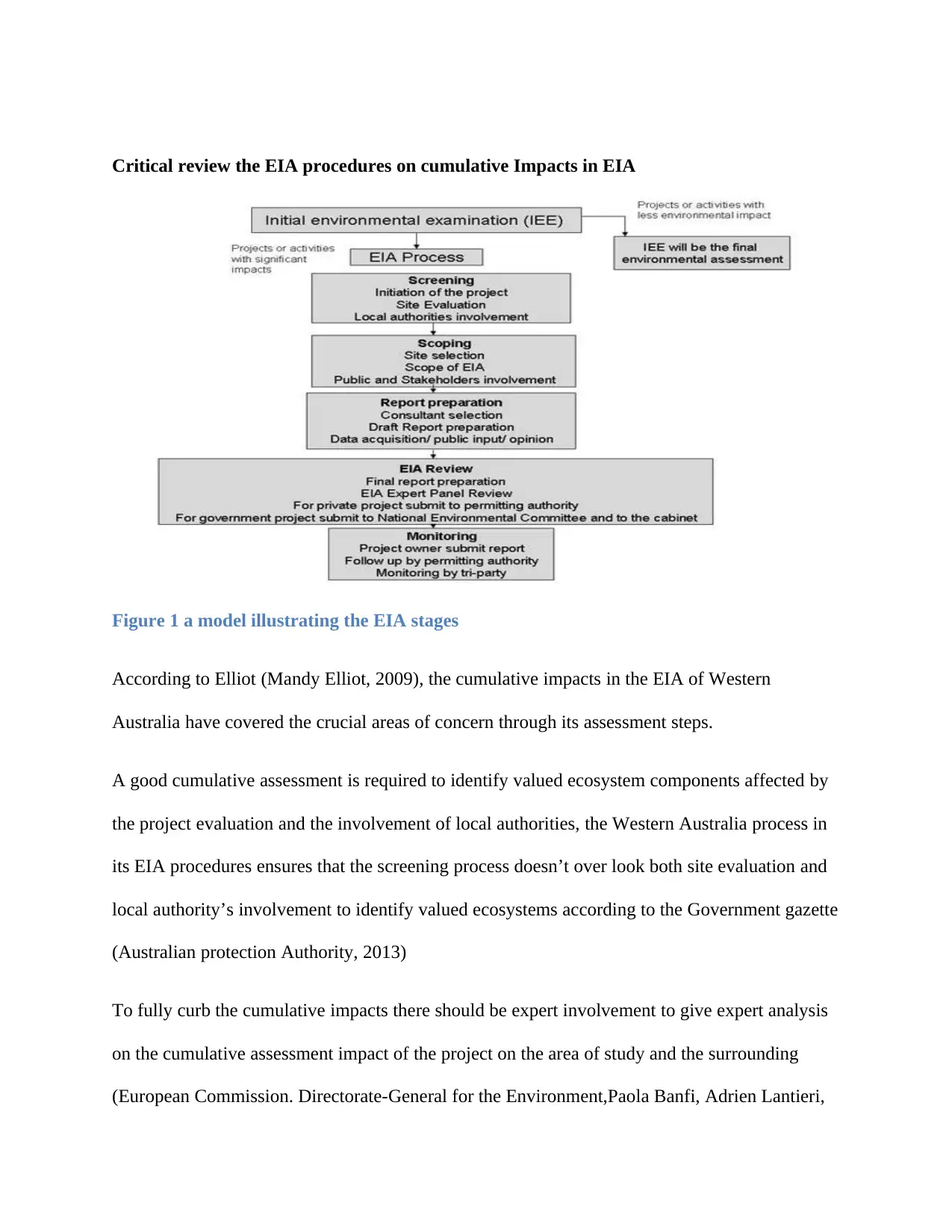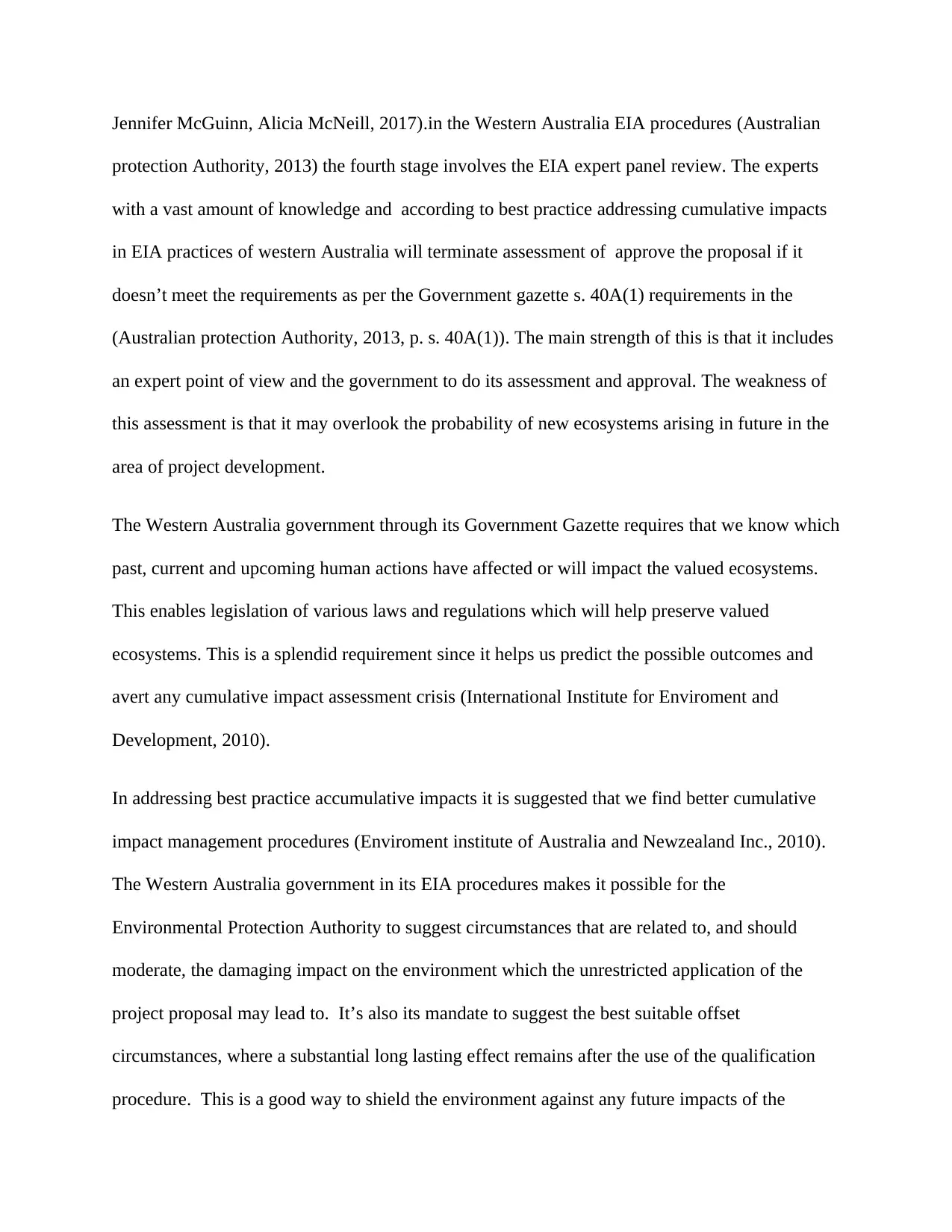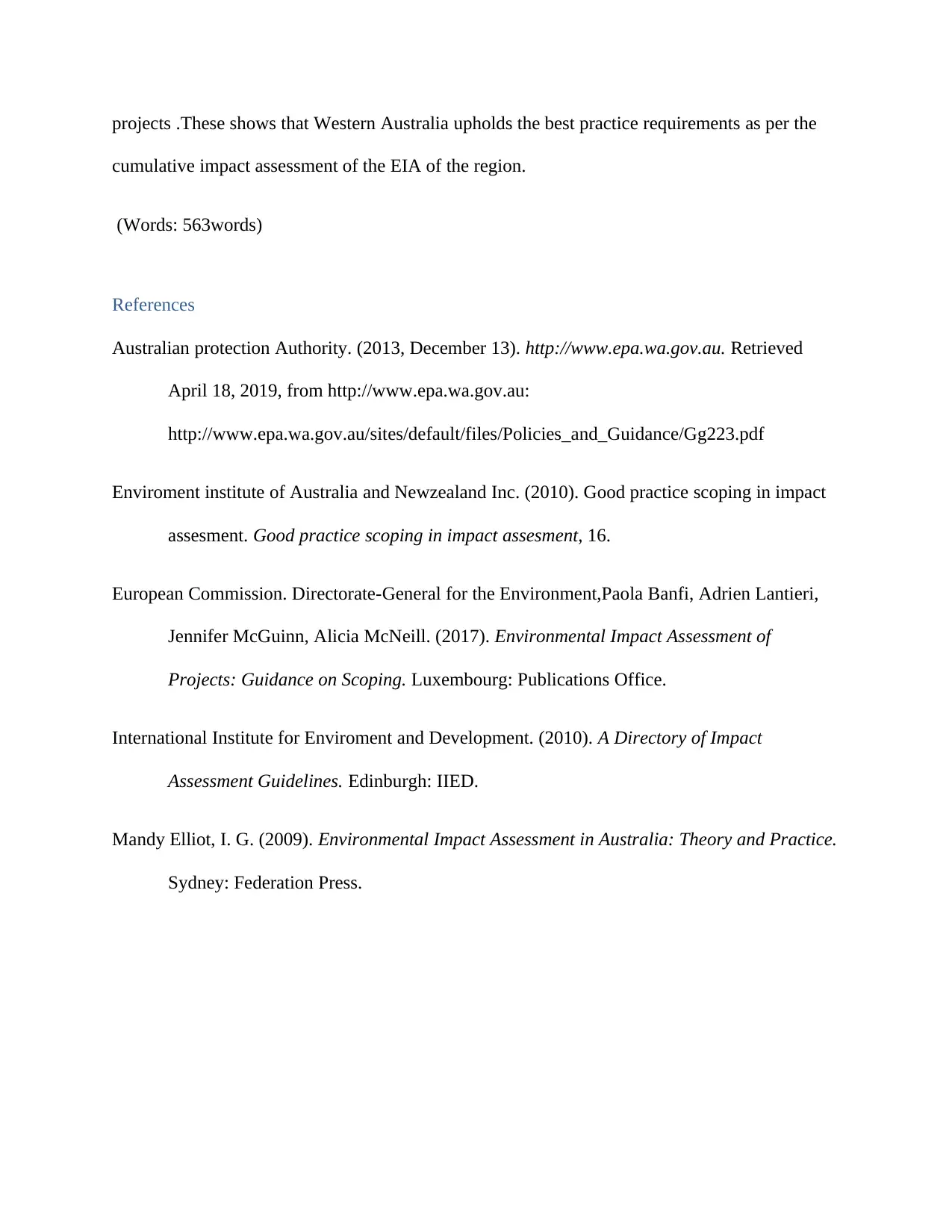Critical Review of EIA Procedures on Cumulative Impacts in EIA
VerifiedAdded on 2023/01/19
|4
|671
|37
Report
AI Summary
This report provides a critical review of the Environmental Impact Assessment (EIA) procedures in Western Australia, specifically focusing on cumulative impacts. The analysis examines the EIA process, highlighting the strengths of the current procedures, such as expert involvement and government oversight, as well as weaknesses like the potential oversight of future ecosystem developments. The report references the Western Australia Government Gazette and emphasizes the importance of identifying past, current, and future human actions impacting ecosystems to enable effective legislation and prevent cumulative impact crises. The assessment also suggests the adoption of better cumulative impact management procedures and emphasizes the role of the Environmental Protection Authority in mitigating adverse environmental impacts through appropriate circumstances and offset suggestions. The report concludes that Western Australia adheres to best practice requirements for cumulative impact assessment in the EIA of the region.
1 out of 4






![[object Object]](/_next/static/media/star-bottom.7253800d.svg)